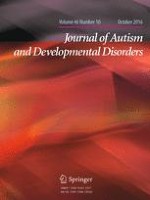15-07-2016 | Original Paper
Personal Space Regulation in Williams Syndrome: The Effect of Familiarity
Gepubliceerd in: Journal of Autism and Developmental Disorders | Uitgave 10/2016
Log in om toegang te krijgenAbstract
Personal space refers to a protective barrier that we strive to maintain around our body. We examined personal space regulation in young people with Williams syndrome (WS) and their typically developing, chronological age-matched peers using a parent report questionnaire and a stop-distance paradigm. Individuals with WS were reported by their parents to be more likely to violate the personal space of others, and indeed they maintained a shorter interpersonal distance in the stop-distance paradigm. Interestingly, WS individuals failed to regulate their personal space based on the familiarity of the person they were interacting with. Findings are discussed in relation to the wider social profile associated with WS, and the possible impact of atypical personal space regulation on social vulnerability.
